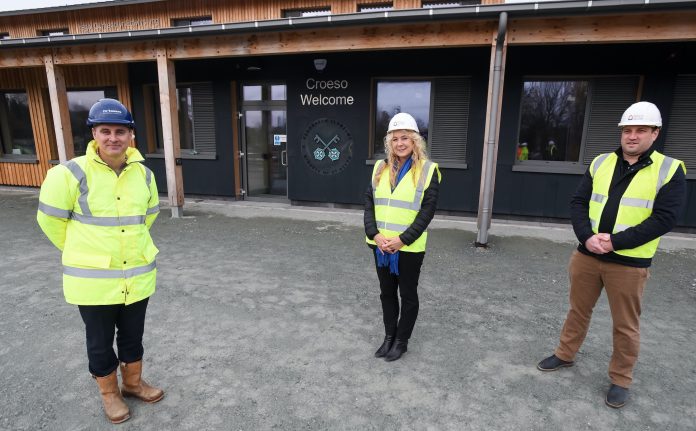Construction firm Pave Aways has completed the first-ever Passivhaus school to be built for Powys County Council
Pave Aways has completed the main works to the pioneering Welshpool Church in Wales Primary School that meets the rigorous energy efficiency standards required for Passivhaus certification.
Constructed around a timber frame that was sustainably sourced in Wales, the school has a superior level of insulation and was built to be airtight.
It also has a heat recovery and ventilation system and solar panels on the roof to minimise running costs.
The school, which will open for 360 pupils in January, has been built as part of the council’s Strategy for Transforming Education in Powys.
It is being funded by the Welsh Government 21st Century Schools Programme with 50% of the cost coming from Powys County Council. The project is being delivered in partnership with Heart of Wales Property Services.
A contemporary and energy-efficient school
Steven Owen, managing director of Pave Aways, said: “This scheme will provide a contemporary and energy-efficient school that will serve the children of Welshpool well for years to come.
“It has given a huge boost to the local economy, supporting a large number of jobs on-site and through our supply chain, as well as upskilling many trades who had never worked on a Passivhaus scheme before.
“Producing a building of this size that reaches these high standards is a big achievement and one that everyone who has worked on the school should be proud of.”
Phyl Davies, cabinet member for education and property, said: “I’m delighted that we have received the keys for the new Welshpool Church in Wales Primary School.
“This new school is an important part of our strategy to transform education in Powys and will provide a learning environment that will allow learners and teaching staff to thrive and reach their potential.”


















The most important information has been left out of this PR piece, i.e. how much did it cost to build, including all the cost of the staff needed to research and specify this luxury building, and what does it cost to run? And could it be reproduced at scale on similar projects across the UK at a viable price that won’t destroy councils’ budgets? Otherwise it is just an overspecified vanity project and all those hard-won skills learnt to finish this building will atrophy and die.